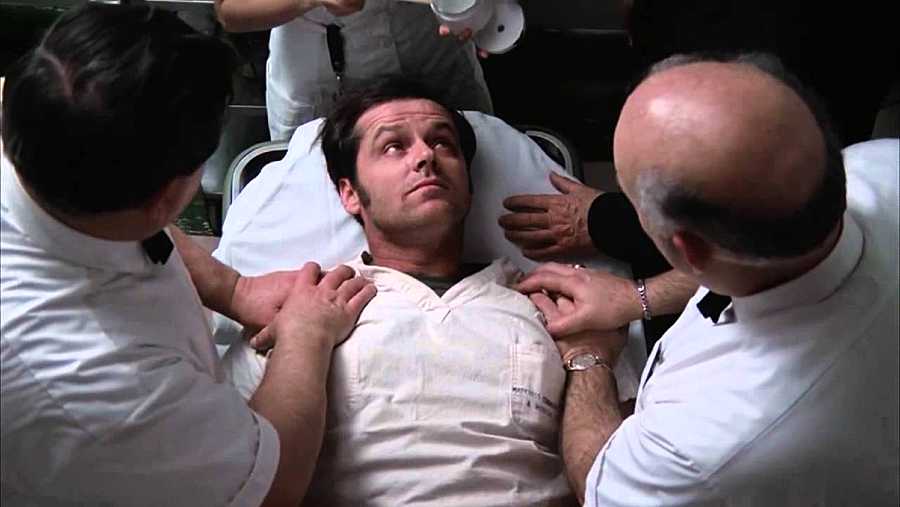Mind is an entity that cannot be seen. This makes any problem related to it difficult to understand and to treat. The 2015-16 National Mental Health Survey, the largest of its kind in India, estimated a treatment gap of 85 per cent in psychiatric problems. The survey also highlighted that one of the main reasons for this treatment gap is not just stigma but also myths related to psychiatric treatments. Over the decades, one such most controversial treatment used by mental health professionals is electroconvulsive therapy or ECT.
What comes to mind when you hear about ECT? A lot of people say they visualise a protesting person being gagged and forced to receive a “shock” while held down by strong men. This is an entirely false portrayal and the imagery borrowed from Hollywood and Bollywood films alike.
In the 1975 classic One Flew Over The Cuckoo’s Nest, an adaptation of the novel by Ken Kesey, Jack Nicholson plays the role of McMurphy, a prisoner who fakes mental illness in an attempt to escape prison labour. What follows is his ordeal in the psychiatric ward against a “cruel” nurse and her treatments. Although the film is a highly regarded flick of its genre, the coercive and punitive portrayal of psychiatry has black-marked mental health-care to date, especially ECT.
Discovered by Italian researchers Ugo Cerletti and Lucio Bini in 1940, ECT is a form of treatment in which a minimal amount of controlled electric current is passed through specific parts of the brain in an individual who is sleeping under the effect of anaesthesia. This happens for a few seconds in the presence of trained physicians.
There are dedicated suites and machines to administer ECT. A typical course involves 2-3 sessions a week, up to 6-10 sessions. The frequency and duration of treatment varies and depends on the psychiatric condition and improvement of the patient.
Side effects include mild headache and occasional memory disturbances related to very recent events, but these are completely regained over some days to weeks. This, of course, does not mean that an individual will forget his or her identity, faces of family or one’s home address. Rather they may not remember what food they had the day before receiving ECT and other minor details, which are very transient.
Most of the scare around ECT is related to the fact that the individual receiving it may feel pain and trauma. That is indeed not the case.
Modern day practices involve the presence of an anaesthetist who ensures that the person is sleeping. Once the person is awake, there may be mild body ache in some cases. The 2017 Indian Mental Healthcare Act (MHCA) mandates ECT only with anaesthesia and bans ECT for minors.
Contrary to popular belief, ECT is one of the most effective and landmark treatments in psychiatry, evidenced by a large body of research. It can be lifesaving in patients who are suicidal or severely depressed and have failed to respond to treatment or are suffering from other severe mental disorders such as schizophrenia. It is specifically beneficial in the elderly and pregnant women in whom medicines may lead to more side effects. In fact, research from Western coun-tries shows that the majority of the population receiving ECT are seniors, which is the opposite in India.
As long as we view or name ECT as “shock therapy” or “current therapy”, it can never be accepted as a form of treatment. Under MHCA, nobody is forced to receive ECT. There is a detailed discussion between the doctor and the patient/ family, consent is signed and only then is ECT initiated after monito-ring all the medical parameters.
Broadly, it leads to changes in the nerve pathways and neurochemicals in the brain that help in reducing psychiatric symptoms, aid in faster recovery and complement the action of medicines. Research has shown that public perceptions about ECT change remarkably after they undergo and witness this treatment. At Nimhans, Bangalore, we offer ECT to nearly 20 individuals every day with safe and effective outcomes.
This does not mean that every person with a mental health problem needs ECT. It is just one of the forms of treatment reserved for specific and severe cases.
ECT is recommended in all national and international trea-tment guidelines and remains less utilised in hospitals of India. In certain cases, this form of mental health intervention can save lives, and if we have to offer this benefit to the masses, it is the collective responsibility of the media and public to obtain and portray authentic and unbiased information about electroconvulsive therapy.
The writer is a psychiatrist at Nimhans, Bangalore
MYTH BUSTERS
• ECT is NOT ‘shock therapy’
• It does not affect speech, intelligence and personality
• It does not cause brain damage
• It is a form of treatment and not punishment
• It is not given when a person is awake.










